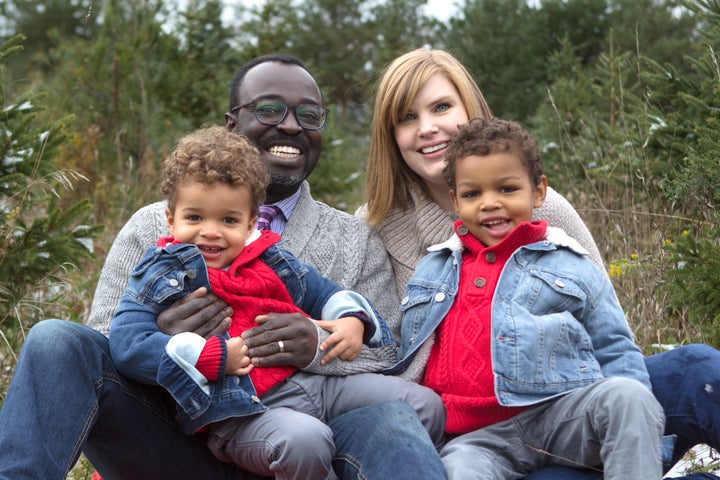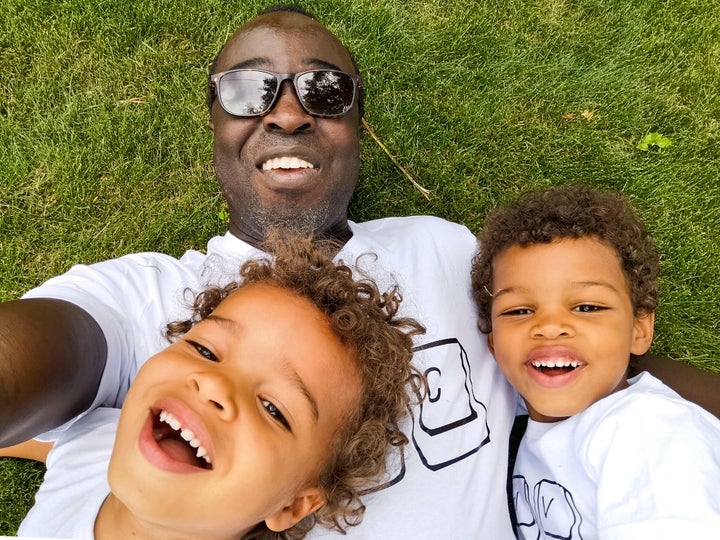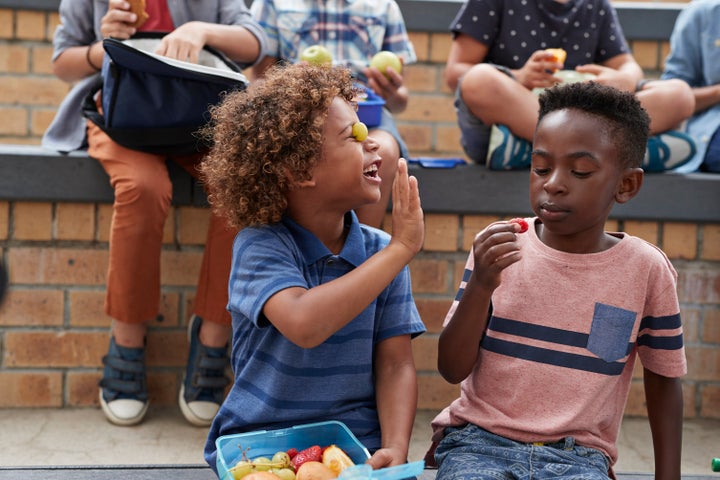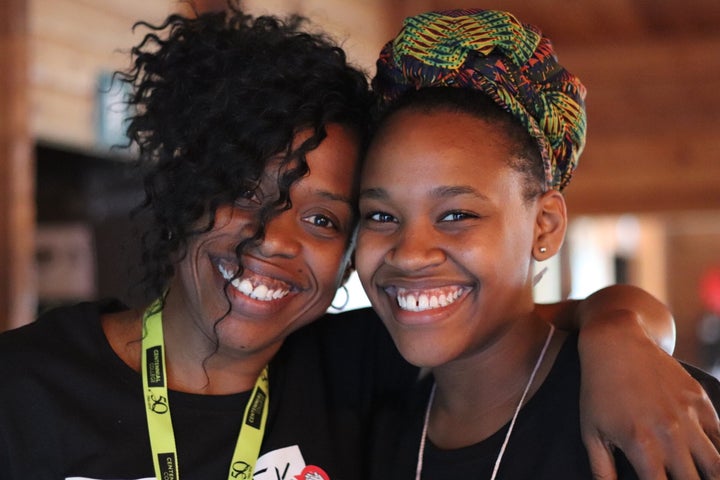
One hot day this past summer, Casey Palmer’s sons went with their aunt to play at a park in their Toronto neighbourhood. It was there that a group of kids, accompanied by their idling parents, started berating them with insults about their “raggedy” hair and their “poo-coloured” skin.
His sons are three and five years old.
“The funny thing about race is that the world often forces you to have those conversations a lot earlier than you want to,” Palmer told HuffPost Canada.
Watch: Six-year-old kid sent home on first day of school because of his hairstyle. Story continues below.
For many parents, September brings several pressing back-to-school questions. But for parents with non-white kids, these concerns often go beyond the universal anxieties about kids making friends, or having school supplies to last them throughout the year.
“Math, manners, learning to tie their shoes — that’s all fine,” said Palmer, a father to two mixed-race kids. “But how the world sees them, and interacts with them, is beyond anything any of us can control. And somehow, we’ll have to figure out how to navigate that.”
Here are some common challenges kids of colour often have to face at school:
When they start to become conscious of their race
Finding a way to face these challenges turns out to be, just like parenting, much easier said than done. It’s no wonder a whole genre of literature exists purely to address how we talk to our kids about things like race and gender.
“You’re better off arming your kids with knowledge, instead of leaving them defenseless for when you’re not around to protect them,” Palmer said.
From as early as five years old, kids begin classifying and grouping people based on their appearances. And as difficult as they may be, having these conversations early have proven to be useful for Palmer and his kids.

His five-year-old son, for example, is already aware that he has a black father and white mother, and Palmer has been working with him to unpack what that means. “We speak about his physical characteristics and why we should celebrate them — that being in the 1 per cent of Canada’s mixed heritage population doesn’t have to be a bad thing,” he said.
They’ve started talking about things like family lineage, history, and the countries where their grandparents come from. “I remind him to focus more on his own interests, skills and abilities than any way the world wants to paint him,” Palmer said, “but also that he should always understand that the world definitely sees colour, and he’ll need to learn what that means for him as he grows older.”

When their lunch looks “different”
Sometimes, though, these challenges spring up in ways that aren’t easy to immediately identify for what they are. Without certain experiences and vocabulary behind them, kids can often find themselves in situations where they’re treated differently, without really understanding why.
When she was just two or three years old, Sonya Davidson’s father packed her a traditional Chinese lunch that doubles as a version of chicken noodle soup: a steamed, marinated pork dish, served with salt fish.
“I can vividly remember bringing it to preschool,” Davidson told the Toronto Star in 2018, “[and] being told by a teacher to go to the kitchen and eat it — alone.” Though at the time she didn’t understand what was happening, the memory stuck.

Her experience isn’t unique. Google “lunch box moment” and you’ll find similar stories from thousands of Asian Americans, each describing feelings of ostracization from classmates who made them feel so ashamed of their lunches that some would go as far as to throw them out.
“Younger kids will just say whatever they’re thinking,” Davidson, who now has two sons of her own, told HuffPost Canada.
With her own kids, she chose to go a different route, lunch-wise, to curtail any potential bad experiences. “I would ask my kids if they were OK with eating certain meals at school,” she said. “Tuna sandwiches, for example, got a big ‘no’ when they were younger.”

For the most part, Davidson’s kids stuck to Westernized lunches: sandwiches, soups, and pastas. With this, she has shown patience. But that hasn’t precluded her from introducing them to the “smelly,” traditional foods she’s always been attracted to.
“Interestingly, as my son heads off to second-year university, he was asking for a few of my recipes,” Davidson said. “I just taught him how to make mapo tofu” — a dish famous for its strong odour — “just the other night.”
When their name is ‘hard to pronounce’
Lots of kids have bad school experiences with their “foreign” names.
In a piece for Macleans, Elamin Abdelmahmoud explained his thinking behind naming his daughter, upon whom he bestowed his “clunky,” Sudanese last name — a name he knows will be its own kind of battle.
“I wanted you to have my last name,” Abdelmahmoud wrote. “And I wanted it to be a burden.”

Names, to Abdelmahmoud, are more than just assigned titles. They’re tied to history and ancestry. And while “foreign” ones might present themselves as a conflict for young kids, Abdelmahmoud wrote he has all intentions of getting his daughter, Amna, ready for the fight.
“My job is to prepare you for the battle,” he wrote. “I will teach you Arabic, and I will tell you of your history, of Khartoum sunrises, and of your grandmother, who is the greatest woman to have ever lived on this earth.”
Teachers also have a huge role in correctly pronouncing names when taking attendance, and can really set the tone for the rest of the classroom.
“Mutilating someone's name is a tiny act of bigotry.”
- Jennifer Gonzales, former teacher and education blogger
“Mutilating someone’s name is a tiny act of bigotry,” former teacher Jennifer Gonzalez wrote on her education blog. “Whether you intend to or not, what you’re communicating is this: Your name is different. Foreign. Weird. It’s not worth my time to get it right.”
There are plenty of tips out there to help teachers learn and remember the proper pronunciations of students’ names — asking the student in private, for example, then saying it out loud and then asking if you got it right — but if as a parent you want to be absolutely sure, you can always reach out to the teacher beforehand and have a conversation.
When they’re grown, but still need support
Dr. Kisha McPherson, a social science and humanities professor at Centennial College, sees preparing her daughter as something that never quite ends.
“I’ve always talked openly [with my daughter] about my fears,” Dr. McPherson told HuffPost Canada, “not to project them onto her, but just so she knows that if she feels off, she is not losing her mind, and it’s not just in her head.”
McPherson’s daughter has grown up with a mother who, as her job, researches the experience of young black girls in the education system, and by default has been exposed to some of the resulting lessons. But even as her daughter went off to university, McPherson ensured that she would take at least one African studies course, and another on gender.

“She is a little shy, so we practiced allowing her to speak up. I would encourage her to deal with issues that she was having by speaking up for herself on her own,” she said, then added, “without me.”
There’s no way to make sure your kid is fully ready to deal with some of the things they’ll inevitably face at school. But many parents agree it’s necessary to make an effort to have real conversations about sensitive topics before their kids are thrown into the school environment.
“We can’t live their lives for them,” Palmer says, “but we can try to steel them for the world that’s out there.”